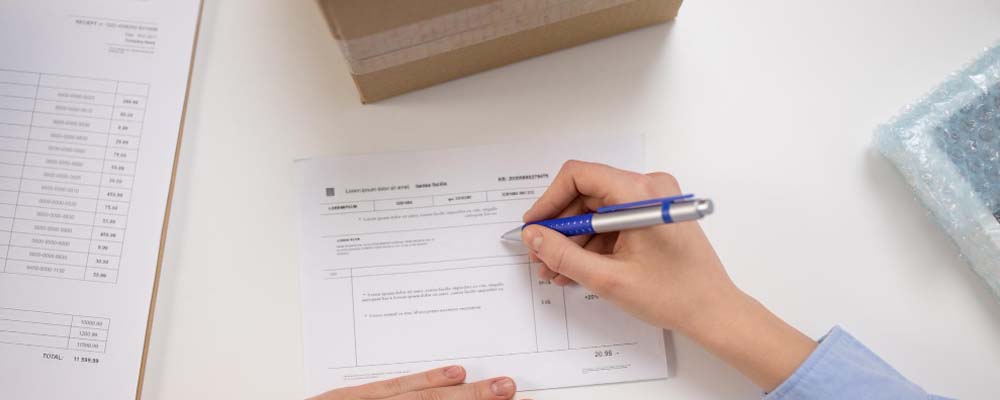
In the bustling world of international trade and logistics, ensuring the smooth movement of goods from one country to another can be complex. One of the most critical aspects of this process is proper documentation. Whether you’re a freight forwarding company, logistics provider, importer or exporter, customs broker, manufacturer, or e-commerce business, understanding the essential documents for processing shipments is paramount.
This blog post will provide you with everything you need to know about shipment documentation, offering valuable insights and practical tips that will help ensure your shipments are processed efficiently and accurately.
Understanding the Importance of Shipment Documents
Why Proper Documentation Matters
Proper documentation is the backbone of any shipment. Without the right paperwork, customs may delay, return, or even confiscate goods. This can have a significant impact on delivery timelines and business reputation. Accurate documentation ensures compliance with international regulations and smooth customs clearance.
Legal and Financial Implications
Incorrect or incomplete documentation can result in legal issues, fines, and financial losses. By ensuring all required documents are in order, businesses can avoid costly penalties and legal complications, making the entire process more transparent and efficient.
Enhancing Customer Satisfaction
Timely delivery is crucial for maintaining customer satisfaction. Proper documentation expedites processing and delivery, ensuring customers receive their goods as expected. This reliability fosters trust and long-term business relationships.
Key Documents for Shipment Processing
Bill of Lading
One of the most crucial documents in the shipping process is the Bill of Lading (BOL). This document serves as a contract of carriage between the shipper and the carrier. It outlines the type, quantity, and destination of the transported goods. The BOL also serves as a receipt upon delivery of the goods.
Commercial Invoice
The commercial invoice provides a detailed account of the goods being shipped, including their value, description, and terms of sale. Customs authorities use this document to determine the import duties and taxes owed.
Packing List
A packing list outlines the contents of each shipment, including the weight, dimensions, and packaging details. This document helps customs officials and freight forwarders verify the contents of the shipment, ensuring everything matches the commercial invoice.
Navigating Customs with the Certificate of Origin
What is a Certificate of Origin?
The Certificate of Origin (CO) is a document that certifies the country in which the goods were manufactured. This document is essential for determining the applicable tariffs and duties, as well as ensuring compliance with trade agreements.
Importance in Trade Agreements
Trade agreements often grant preferential treatment to goods originating from specific countries. A CO helps businesses take advantage of these benefits, potentially reducing import duties and taxes and making their products more competitive in the global market.
How to Obtain a Certificate of Origin
Obtaining a CO typically involves submitting a request to a designated authority, such as a chamber of commerce. The process may vary by country, but it generally requires providing information about the goods, their production process, and the exporting country.
 Ensuring Compliance with Safety and Health Certificates
Ensuring Compliance with Safety and Health Certificates
Health and Safety Regulations
Certain goods, particularly food and pharmaceuticals, require health and safety certificates to ensure they meet the importing country’s regulations. These certificates verify that the goods are safe for consumption or use and comply with local standards.
Types of Safety Certificates
There are various types of safety certificates, including phytosanitary certificates for plants and plant products, and sanitary certificates for meat and dairy products. Each certificate serves a specific purpose and ensures that the goods meet the necessary health requirements.
Obtaining Safety Certificates
To obtain the required safety certificates, businesses must have their products inspected and tested by authorized agencies. This process may involve laboratory testing, on-site inspections, and compliance with strict guidelines to ensure the products meet safety standards.
The Role of an Import License
What is an Import License?
An import license is a government-issued document that grants permission to import certain goods into a country. This document is essential for regulated products, such as firearms, pharmaceuticals, and hazardous materials.
When is an Import License Required?
Not all goods require an import license. However, certain products that pose potential risks or are subject to import restrictions must be accompanied by this document. It is important for businesses to research and understand the specific requirements for their goods.
How to Apply for an Import License
Applying for an import license typically involves submitting an application to the relevant government authority. The application process may require providing detailed information about the goods, their intended use, and the importing country’s regulations.
Understanding the Shipper’s Export Declaration
Purpose of the Shipper’s Export Declaration
Governments use the Shipper’s Export Declaration (SED) to monitor and control exports. It includes information about the goods being exported, such as their value, quantity, and destination. The SED helps authorities track trade statistics and enforce export controls.
When is an SED Required?
An SED is required for shipments exceeding a certain value threshold or destined for certain countries. It is important for businesses to understand the specific requirements and thresholds in their exporting country to ensure compliance.
Filing an SED
Filing an SED typically involves submitting the required information electronically through an online system. Businesses must provide accurate and complete information to avoid delays and penalties. Working with a freight forwarder or customs broker can help ensure the process is handled correctly.
The Importance of an Insurance Certificate
Protecting Your Shipment
An insurance certificate proves insurance coverage for the goods being shipped. This document protects against potential losses or damages during transit. It ensures financial protection for businesses in case of unforeseen events.
Types of Coverage
There are various types of insurance coverage available, including all-risk coverage and named-perils coverage. All-risk coverage provides comprehensive protection against a wide range of risks, while named-perils coverage offers protection against specific risks only.
How to Obtain an Insurance Certificate
To obtain an insurance certificate, businesses must purchase a policy from an insurance provider. The policy should be tailored to the specific needs of the shipment, taking into account factors such as the value of the goods, the mode of transport, and the destination.
 Navigating the World of Letters of Credit
Navigating the World of Letters of Credit
What is a Letter of Credit?
A letter of credit (LC) is a financial document issued by a bank that guarantees payment to the seller upon fulfillment of certain conditions. It assures both the buyer and the seller that the transaction will be completed as agreed.
Types of Letters of Credit
There are various types of letters of credit, including revocable, irrevocable, and confirmed LCs. Each type serves a specific purpose and offers different levels of security and flexibility. It is important for businesses to understand the differences and choose the right type for their needs.
Using a Letter of Credit
To use a letter of credit, businesses must work with their bank to establish the terms and conditions of the LC. This typically involves providing detailed information about the transaction, including the value of the goods, the shipping terms, and the payment conditions.
Streamlining Shipments with Electronic Data Interchange
What is Electronic Data Interchange?
Electronic Data Interchange (EDI) is a technology that allows businesses to exchange documents and information electronically. It eliminates the need for paper documents, reducing the risk of errors and speeding up the shipment process.
Benefits of EDI
EDI offers numerous benefits, including improved accuracy, faster processing times, and reduced administrative costs. It also enhances communication between trading partners, making the entire process more efficient and transparent.
Implementing EDI
Implementing EDI typically involves working with an EDI service provider to set up the necessary systems and protocols. Businesses must ensure that their systems are compatible with those of their trading partners to enable seamless data exchange.
The Role of Pro Forma Invoices
Understanding Pro Forma Invoices
A pro forma invoice acts as a preliminary bill of sale, sent to buyers before a shipment. It specifies the goods being shipped, including their value and terms of sale. While not legally binding, it serves as a reference for customs and payment purposes.
When to Use Pro Forma Invoices
Businesses use pro forma invoices in various scenarios, including when buyers need to secure financing or obtain an import license. These invoices provide a clear picture of the transaction, helping both parties prepare for the shipment.
Creating a Pro Forma Invoice
Creating a pro forma invoice involves providing detailed information about the goods, their value, and the terms of sale. The document should be clear and accurate to avoid any misunderstandings or delays in the shipment process.
 Conclusion
Conclusion
Understanding and managing shipment documentation is crucial for ensuring smooth and efficient logistics operations. By familiarizing yourself with the key documents and their purposes, you can avoid delays, reduce costs, and enhance customer satisfaction.
For freight forwarding companies, logistics providers, importers and exporters, customs brokers, manufacturers, and e-commerce businesses, proper documentation is the backbone of successful international trade. Stay informed, stay compliant, and ensure your shipments always reach their destination without a hitch.
Achieve greater efficiency in your logistics operations. Happy shipping!




 Ensuring Compliance with Safety and Health Certificates
Ensuring Compliance with Safety and Health Certificates Navigating the World of Letters of Credit
Navigating the World of Letters of Credit Conclusion
Conclusion



